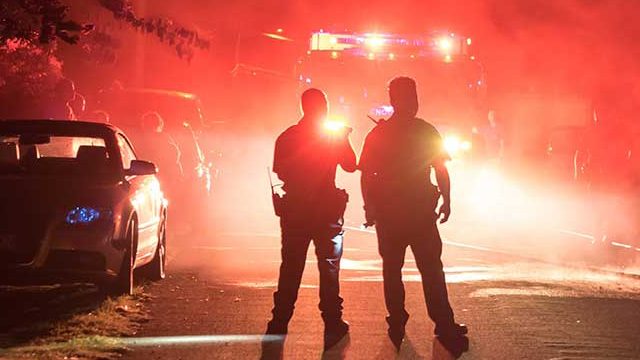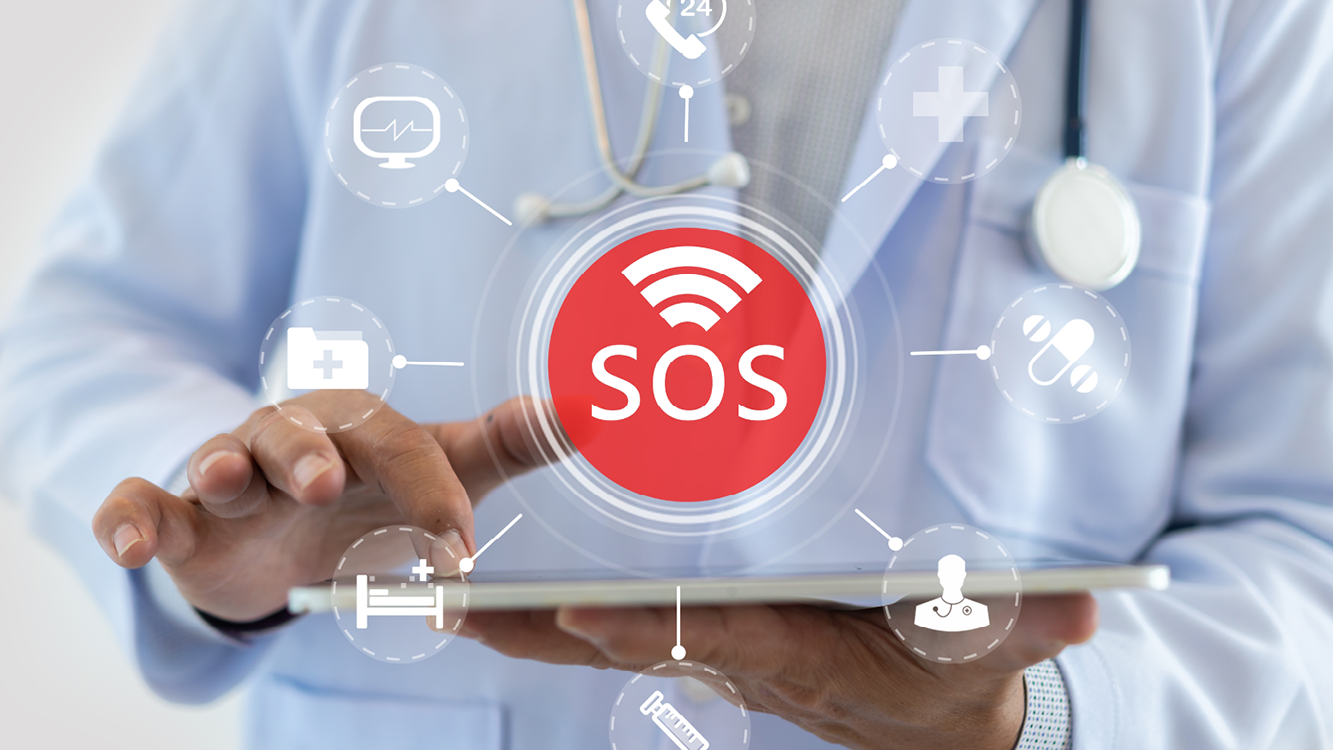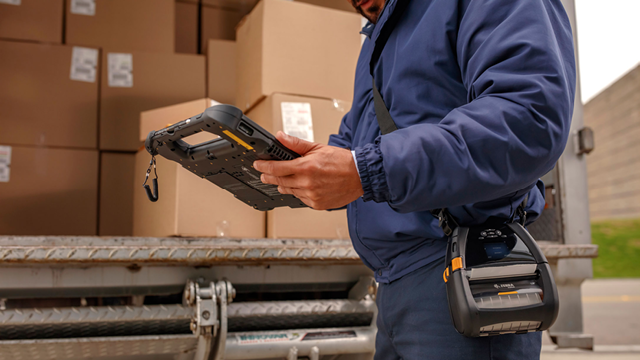Why Wireless and Mobile Solutions Are Critical Emergency Services Technology
Consider how your solutions can enhance Blue Light efficiency and safety
BlueStar's diverse portfolio offers unparalleled access to premium products and services that drive business growth and success. From state-of-the-art hardware to advanced software solutions, our portfolio is designed to empower businesses with the tools they need to thrive in today's competitive landscape.
Our vertical-based content focuses on different industry technologies, solutions, and insights.
A true VAD offers top-notch pick, pack and ship services, and provides programs and services that add value to the distributed products that increase their value or worth.
The BlueStar Difference8 min read
BlueStar March 25, 2025 12:18:01 PM EDT

Making the case for rugged mobile tablet solutions for police, firefighters, and EMS workers.
Mobile technology that combines devices, software and connectivity is an essential tool that enables police officers, firefighters, and emergency medical technicians (EMTs) to make split-second decisions as situations evolve. In addition, it empowers emergency personnel to act more quickly and effectively, sharing information with hospital emergency departments and other public safety organizations. The results are seen in saved property and lives.
Emergency workers operate in environments where dust, vibration and inclement weather are the norm. In addition, their jobs require multitasking and computing on the go, which includes rough usage and all the bumps and drops that come with the territory. So, while rugged is a necessity, it isn’t enough. Connectivity also can be a challenge—particularly in rural or remote areas. And devices must be powerful enough to take advantage of increasingly sophisticated software applications. And let’s not forget about security. First responders deal with sensitive information governed by healthcare regulations and used in legal proceedings, so it must be protected.
Whether training to deal with a fire or executing a pandemic response, there’s almost always a strong emphasis on technology utilization. Mobile computers, tablets, wearables, and other technologies, though just a small part of the first responder toolset, are quickly proving essential to ensuring personal safety and increasing efficiency in everything from everyday interactions to life-or-death scenarios. Essentially, they become a force multiplier in times such as these when a reduced workforce is being called on to take on a dramatically increased workload.
In a recent Zebra report, the “Future of Operations: Public Safety Report,”[1] decision makers from more than 140 public sector agencies shared their thoughts about mobile technology and its effect on the industry. Here are a few highlights:

Explore the ways rugged tablets (plus an accessory ecosystem and support services) empower first responders to better serve their communities.
The “firefighter-proof” mobile solution that supports the Nicholasville Fire Department.
First responders can’t leave anything to chance when facing a fire or medical emergency. Therefore, access to streamlined, efficient communication is paramount when out on a call.
Nicholasville is one of the fastest-growing cities in Kentucky, with more than 30,000 people across 13 square miles of homes, businesses and farms served by 58 firefighters at 4 stations.
When the Nicholasville Fire Department decided to update the mobile data terminals on its trucks, it needed a dependable, modern solution. Its laptops were outdated, and its operating system didn’t support current applications. It required new equipment, but not just any computers would do.
“When firemen have something in their hands, it has to be bullet-proof,” says Lt. Brian Jenkins of the Nicholasville Fire Department. “We’re good at torture-testing new equipment, whether we intend to or not, and we needed to know the next solution was going to last inside a fire truck with everyday use.”
The fire department reached out to public safety IT specialist L&W Technology Solutions. After reviewing the fire department’s robust list of requirements and squaring them with best practices and industry trends, L&W found the perfect solution.
The IT solution provider equipped the Nicholasville Fire Department with Zebra Technologies L10 rugged tablets, vehicle docks, and IP65 backlit companion keyboards. The tablets can support a wide variety of uses, including navigation, HAZMAT management, incident reporting, task management and backup communications if radios go down.
When called to a medical emergency, first responders can immediately start collecting information on the tablet. The built-in camera lets them take and transfer pictures for data collection and pre-incident planning. For example, at an automobile accident scene, a responder can take photos and save them instead of writing down license plates, vehicle identification numbers and driver’s license numbers.
During inspections, fire marshals can use the devices to photograph violations instead of a clipboard and camera, making reports faster and easier. “Zebra tablets offer us a single platform to do virtually everything we need to do while in the field,” says Jenkins. “From getting directions to an emergency and responding to our call management system to building detailed reports and helping us communicate with other first responders, it does it all.”
Zebra tablets can deliver various industry-standard applications essential to the department’s work. For example, StreetWise CADLink simplifies fire and EMS reporting and records management. When a unit is dispatched, it maps out the route to the incident site and offers turn-by-turn navigation at the touch of the screen.
Additionally, Nicholasville uses Emergency Reporting software to capture the National Fire Incident Reporting System (NIFRS) incidents. This is useful for insurance claims as well as investigations. The department also uses the software to maintain an inventory of all the equipment throughout the department, as well as a calendar of events and roll calls.
The tablets also feature Zello, a push-to-talk app that uses mobile/LTE and functions like a walkie-talkie. “Having redundant communications is critical because, when lives are on the line, we need a backup plan for everything,” says Jenkins. “If our main radio system goes down, we can use Zello and our Zebra tablets to communicate.”
Firefighters can also access a HAZMAT research system called Wiser via their tablets. For example, if there’s a tanker truck on the highway, Wiser will tell the individual exactly what the truck is hauling, enabling firefighters to take the steps necessary to keep both first responders and the community safe.
Jenkins says the Zebra tablets were more rugged than other devices the department tested. Plus, the Zebra tablets charge wirelessly in docking stations, eliminating wear and tear on charging contact points and adding to its overall durability.
“Zebra tablets are tough,” says Jenkins. “We need them to take a jolt, a drop, or whatever – because we can’t afford a tablet to break if we drop it.” Jenkins adds that, since adopting the rugged technology, none of the “firefighter-proof” devices have needed to be replaced.
As Nicholasville grows, its fire department is constantly looking to streamline its operations. The Zebra tablets meet the challenge while sustaining the daily round-the-clock stress of responding to emergency calls.
The tablets also are becoming essential for dispatching units in Nicholasville, where new subdivisions are being built faster than the streets can be named. “As someone who has never used an Android product and isn’t a “technology guy,” it’s been an easy transition,” says Jenkins.
Most importantly, Zebra tablets will help the Nicholasville Fire Department answer the needs of a growing city. This scalable, versatile solution will help protect residents, homes, businesses, and fire department personnel.
Selecting the proper hardware, software, and services is an essential first step in creating a winning solution but delivering it all in a timely fashion has become a new challenge in an era of supply chain shortages. But, that’s just one reason partners enjoy working with BlueStar.
We’ve integrated state-of-the-art technology and developed a seamless workflow that leverages inter-connectivity to upstream supply chains and downstream customers. This investment enables our centralized warehouse to offer same-day shipment on more than $100 million worth of IT equipment and solutions.
Our Value-Add Service Team is another fundamental part of improving our partners’ margins and giving them a competitive edge on hardware sales. Whether a partner needs assistance with software installation, hardware configuration, kitting, custom packaging and labeling, or shipping to any domestic or international destination, we’re ready to help. We can even help our partners build brand authority with content marketing and lead generation services in their marketplace.
First responders have a lot on the line when they’re called to an emergency. The last thing they should have to worry about is whether the tools they need to do their jobs will work.
Often, low-priced consumer-grade laptops or tablets cost organizations and agencies—and the people they serve—more in the long run. However, the TCO of a rugged mobile solution investment provides a more accurate picture of costs over time. This is because it incorporates other essentials such as maintenance, repair and replacement costs, peripheral equipment (e.g., docking stations, antennas, external barcode readers), training and support costs.
When calculating TCO, first responders also need to consider device failure rates and lost productivity.
With the proper mobile devices and reliable networks, public safety personnel can get the information they need to protect the communities they serve and keep people safe.

Consider how your solutions can enhance Blue Light efficiency and safety

Why competitive T&L and warehouse operations are deploying rugged mobile tablet solutions.